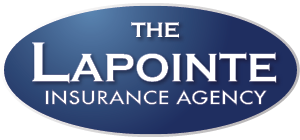Combined Single Limit vs. Split Limit Coverage
- Posted by Daniel Simcock
- On March 16, 2023
- auto insurance, bodily injury, liability, liability insurance, limits, property damage

Main Ideas
- Auto insurance policies can offer either combined single limit (CSL) or split limit coverage.
- CSL provides a single dollar amount of coverage for both property damage and bodily injury liability, while split limit coverage separates the maximum dollar amount of coverage between the two.
- The choice between CSL and split limit coverage depends on personal financial situation and the amount of coverage needed, with CSL often used for higher liability limits and split limit coverage used for lower liability limits.
Auto insurance is an essential component for every driver. It provides financial protection in case of accidents or damages to your vehicle, other people’s property, or bodily injury to yourself or others. When choosing an auto insurance policy, you will have to decide between two types of coverage: combined single limit and split limit coverage. What is an insurance limit?
Combined single limit coverage (CSL) is a type of auto insurance that provides a single dollar amount of coverage for both property damage and bodily injury liability. This means that if you cause an accident and are found liable, your insurance policy will pay out up to the maximum amount stated in your policy, regardless of how much of that amount is needed to cover property damage or bodily injury.
On the other hand, split limit coverage is a type of auto insurance that separates the maximum dollar amount of coverage between property damage and bodily injury liability. For example, a split limit coverage policy with limits of 250/500/100 means that the policy will cover up to $250,000 per person for bodily injury, up to $500,000 for all persons injured, and up to $100,000 for property damage.
One key difference between CSL and split limit coverage is that CSL provides a single limit for both property damage and bodily injury, whereas split limit coverage provides separate limits for each. This means that if you cause an accident and the damages exceed the coverage limit for either property damage or bodily injury, CSL may not provide enough coverage to fully cover both.
Another difference is that CSL is often used for higher liability limits, while split limit coverage is used for lower liability limits. CSL is preferred for drivers who have high net worth, own a business, or have assets that they want to protect. Split limit coverage is preferred for drivers who want to save on their insurance premiums but still have adequate coverage.
When choosing between CSL and split limit coverage, it’s important to consider your personal financial situation and the amount of coverage you need. Additionally, many states have minimum insurance requirements, so it’s important to check your state’s requirements and make sure you have adequate coverage.
In conclusion, auto insurance is an essential component for every driver, and it’s important to choose the right type of coverage. CSL provides a single limit for both property damage and bodily injury, while split limit coverage provides separate limits for each. Both types of coverage have their advantages and disadvantages, so it’s important to consider your personal financial situation and the amount of coverage you need.
We hope this article was helpful. If we didn’t cover a specific question, please feel free to contribute to the comments below or reach out to us directly at info@lapointeins.com.


